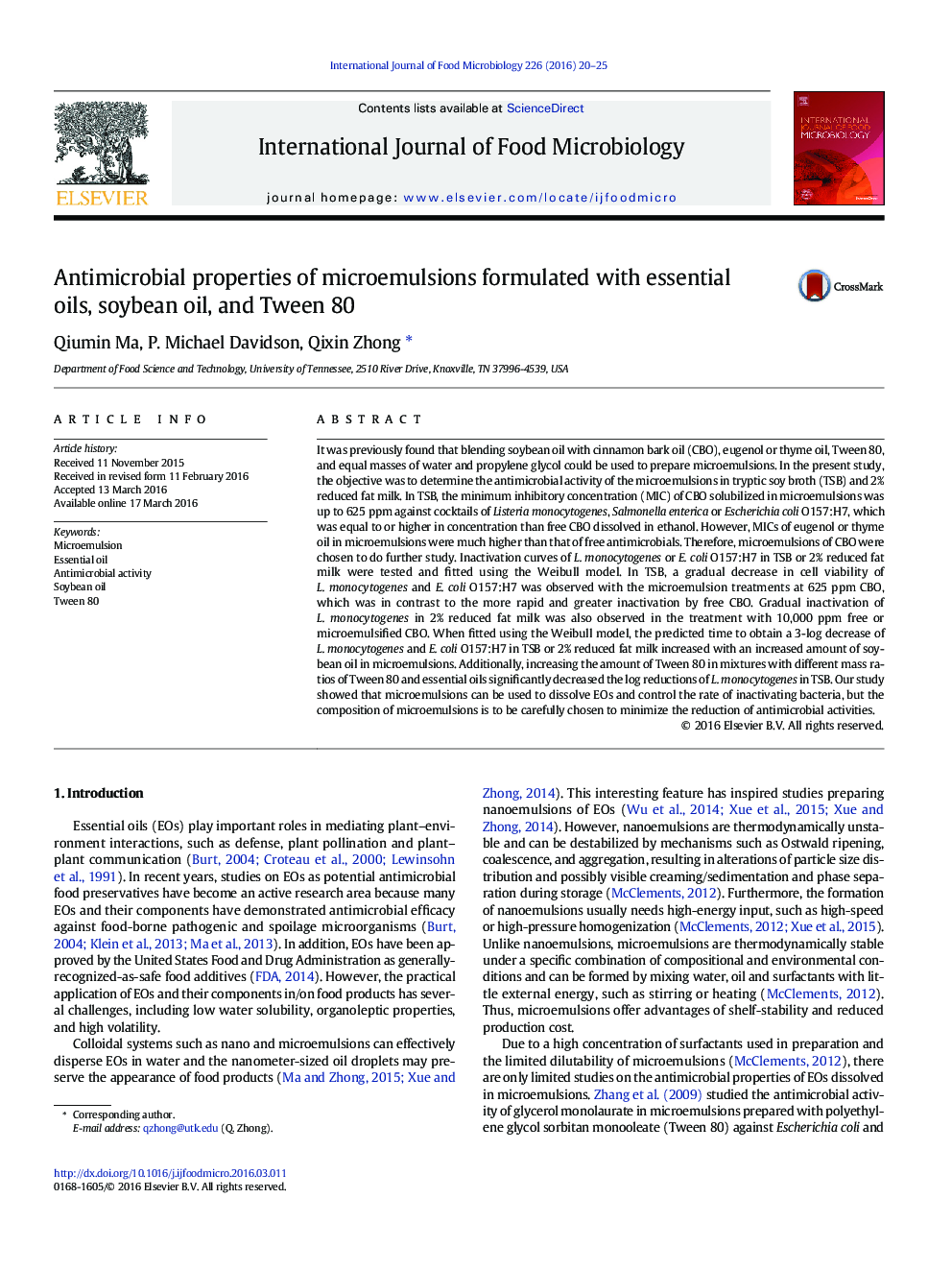| کد مقاله | کد نشریه | سال انتشار | مقاله انگلیسی | نسخه تمام متن |
|---|---|---|---|---|
| 4366313 | 1616557 | 2016 | 6 صفحه PDF | دانلود رایگان |

• Microemulsions of essential oils with soybean oil (SBO) were studied for antimicrobial properties.
• MIC and MBC of cinnamon bark oil (CBO) microemulsions were similar to free CBO.
• CBO microemulsions gradually reduced bacteria in TSB or 2% reduced fat milk.
• Addition of SBO in CBO microemulsions reduced the antimicrobial activity in milk.
• Tween 80 negatively affected the antimicrobial activity of essential oils.
It was previously found that blending soybean oil with cinnamon bark oil (CBO), eugenol or thyme oil, Tween 80, and equal masses of water and propylene glycol could be used to prepare microemulsions. In the present study, the objective was to determine the antimicrobial activity of the microemulsions in tryptic soy broth (TSB) and 2% reduced fat milk. In TSB, the minimum inhibitory concentration (MIC) of CBO solubilized in microemulsions was up to 625 ppm against cocktails of Listeria monocytogenes, Salmonella enterica or Escherichia coli O157:H7, which was equal to or higher in concentration than free CBO dissolved in ethanol. However, MICs of eugenol or thyme oil in microemulsions were much higher than that of free antimicrobials. Therefore, microemulsions of CBO were chosen to do further study. Inactivation curves of L. monocytogenes or E. coli O157:H7 in TSB or 2% reduced fat milk were tested and fitted using the Weibull model. In TSB, a gradual decrease in cell viability of L. monocytogenes and E. coli O157:H7 was observed with the microemulsion treatments at 625 ppm CBO, which was in contrast to the more rapid and greater inactivation by free CBO. Gradual inactivation of L. monocytogenes in 2% reduced fat milk was also observed in the treatment with 10,000 ppm free or microemulsified CBO. When fitted using the Weibull model, the predicted time to obtain a 3-log decrease of L. monocytogenes and E. coli O157:H7 in TSB or 2% reduced fat milk increased with an increased amount of soybean oil in microemulsions. Additionally, increasing the amount of Tween 80 in mixtures with different mass ratios of Tween 80 and essential oils significantly decreased the log reductions of L. monocytogenes in TSB. Our study showed that microemulsions can be used to dissolve EOs and control the rate of inactivating bacteria, but the composition of microemulsions is to be carefully chosen to minimize the reduction of antimicrobial activities.
Journal: International Journal of Food Microbiology - Volume 226, 2 June 2016, Pages 20–25